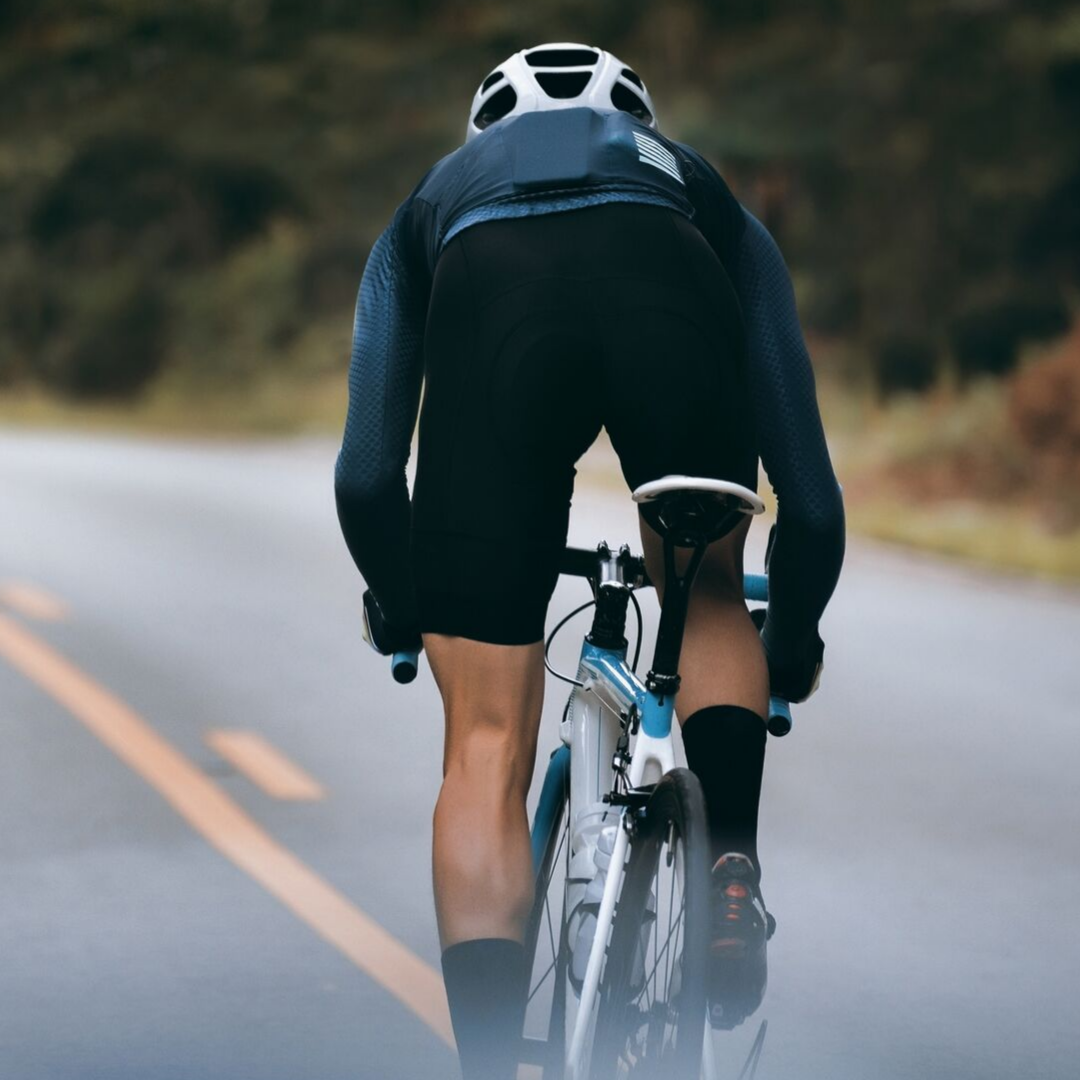When you’re on a racing bike, you tend to lean forwards and round yourself over, so you’re streamlined and the wind can fly straight over the top of you. When you have to inevitably look where you’re going, you’re going to crank your head up or to the side if you’re checking behind you, while likely trying to remain as streamlined as possible. Both of these movements compress your neck quite considerably, and if you continue to hold the position, you’re likely going to get some neck pain at the top of your neck. It’s also quite demanding on the muscles that have to engage your movement for a long period of time, so that’s where you might also start experiencing pain and tension in the muscles of your upper back and shoulders. Looking up in that way for extended periods of time also loads up your facet joints, the joints on the back of the spine, so can cause these to become irritated as well. When you’re checking behind you, this further irritates those facets as you’re cranking them to the side and jars them when it’s done repetitively. So essentially over the time you’re cycling, you’re putting your joints for the duration of your ride or commute, in a fundamentally flawed or vulnerable position.

Our second piece of advice would be to look at what you’re doing outside of the times you’re on your bicycle. When you get to work, if you have an office job, try to make sure you’re nice and upright with good posture. If this is something that you struggle with, especially later in the afternoon when you’re starting to fatigue, make it a habit to correct your posture. If you’re at home in the evening and you’re relaxing in front of the TV or Netflix, try not to have your head propped up on a pillow or to slouch on the sofa. This will decrease the extra times in the day that your body is under stress, so this only occurs when you’re cycling. If everything’s in a good alignment and you have really nice posture outside of your cycling, this will help to offset some of that irritation.
The last piece of advice we would recommend, will help to combat that kyphosis that develops in your mid-back from cycling. If you’re a seasoned cyclist, you may notice your mid-back start to round as your ligaments start to remodel and your posture adapts to the position you adopt when cycling. To target these changes, when you finish your bike ride, roll up a towel and lie on it with it positioned in the middle of your back to help bring your posture back to normal. Make sure to watch the full video above if you would like better guidance on the placement of the rolled up towel, or feel free to get in touch to learn exactly how you can do this. Doing this helps to stretch the structures on the from of the rib cage, realign your spine a little more effectively and to give your muscles on the back area of your spine a bit of a break into a more neutral position. If you’re planning a cycling trip, do make sure to take a towel in your bag to lie on in between sessions to really open out your thoracic spine, and take the pressure off your neck so you’re able to cycle with less pain in your neck.
We hope this advice has been helpful for you, apply ice on the neck a few times a day, lie on a rolled up towel to open up the rib cage and thoracic spine, and try to focus on good posture when you’re out of the saddle. If you do have any questions in relation to cycling, whether it’s for your commute or for enjoyment, do get in touch either by calling us on 0203 947 3222 or by emailing us at info@themayfairclinic.com.
Contact Us.
Email Us
info@themayfairclinic.com
Call Us
0203 947 32 22
Clinic Address
4 Cavendish Square, London, W1g 0PG.